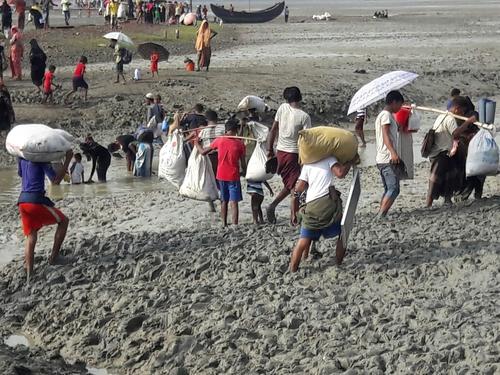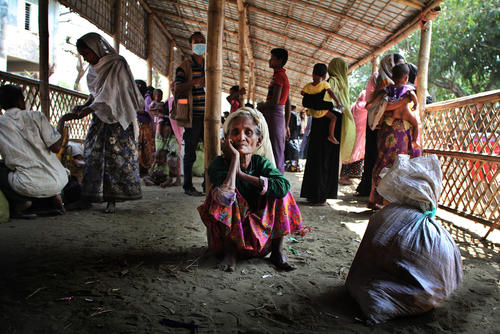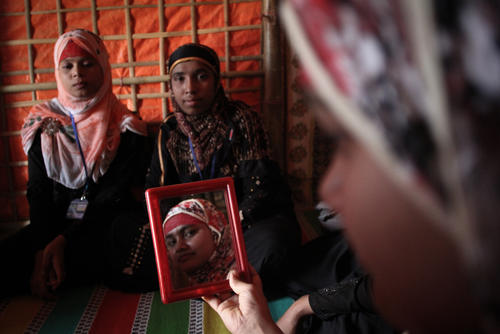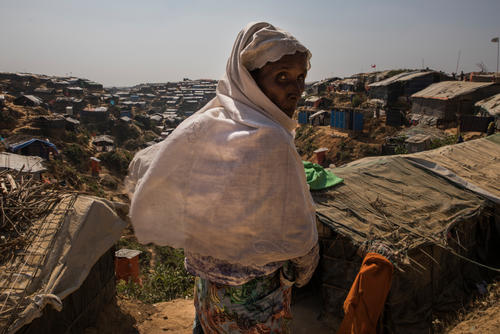During the early hours of Friday 25 August, members of an armed group – in some locations allegedly accompanied by Rohingya villagers – staged coordinated attacks against a number of security locations and a military base in northern Rakhine, Myanmar. The Arakan Rohingya Salvation Army (ARSA), an armed group that came to the world’s attention in October 2016, claimed responsibility for these attacks.
In response, the Myanmar military, at times joined by police – and in some locations, according to multiple accounts, by ethnic Rakhine villagers – launched widespread military operations throughout Maungdaw, Buthidaung and Rathedaung townships. In many locations, Rohingya were attacked, triggering a mass exodus of people to Bangladesh as well as mass displacement within Myanmar. Ethnic Rakhine villagers also fled the area, many taking shelter in monasteries or military compounds or relocating away from the violence.
Rohingya arriving in Bangladesh have shared stories with Médecins Sans Frontières (MSF) about their villages being systematically raided and burnt by Myanmar military and by mob groups targeting Rohingya.
Between 25 August and 16 September, more than 400,000 Rohingya fled to Bangladesh to seek safety, according to the Inter Sector Coordination Group. The existing makeshift camps (Kutupalong, Balukhali and Leda), already extremely densely populated, have absorbed a large proportion of new arrivals. So have the two camps for registered refugees: Kutupalong registered camp and Nayapara registered camp.
Schools, madrassas and community centres within the settlements have been transformed into emergency shelters. Many people have made improvised shelters out of plastic sheeting and bamboo sticks, although some people have no option but to sleep on roadsides. While the host community has absorbed some of the new arrivals, most of the newly arrived Rohingya are struggling to find adequate shelter.
According to reports, significant numbers of people are still stuck behind border lines and on a strip of sandbank on the border between Myanmar and Bangladesh.
This briefing paper, Rapid influx of Rohingya refugees from Myanmar into Bangladesh, contains information related to violence-related injuries seen among patients treated in MSF’s clinics in Bangladesh, further details related to border crossings from Myanmar to Bangladesh, and concerns related to the humanitarian situation in both countries.







